The Zojoji Temple (増上寺) in Tokyo looks like a fairly normal temple. It stands in the Minato district south of Tokyo’s Imperial Palace and, along with Kaneji Temple in Ueno, is one of the city’s most important shrines. Nowadays, tourists mainly visit the colourful Sensoji Temple and skip Zojoji Temple in Shiba Park. Very unfortunate, because historically this shrine is a gem. In this article, I will explain why Zojoji Temple was one of the most important temples in Tokyo’s history, if not the most important.
In this article about the Zojoji Temple
Useful Websites Tokyo & Japan
- Accommodation Tokyo: Agoda, Booking
- Tours & Tickets: Getyourguide Tokyo
- Flight Tickets Japan: Jetradar
- Train Tickets: Japan Railway Pass
- Rental Car: Rental Cars
This page about the Zojoji Temple contains affiliate links. This means that if you make a booking through one of the links on this website, Travel4history receives a small compensation. This is at no extra cost to you!

Zojoji Temple: The largest temple complex in Edo
Zojoji Temple was first built in 1393 and was part of Jodo Shu Buddhism. It was the rising ruler Ieyasu Tokugawa (1543-1616) who decided to put the shrine on this site in 1598. The Zojoji Temple had to offer protection against intruders from the south. For although Ieyasu Tokugawa was in power, Japan was still strongly divided.
Zojoji Temple’s most important period was the 17th century. The shrine grew into a complex of 65 hectares with 48 sub-temples and 150 other religious buildings. More than 3000 priests stayed here, which was exceptional for that time. The Tokugawa family also came here often to do their bidding. It even led to a number of family members being buried at this temple. The Zojoji Temple became a religious centre of power where the teachings of Jodo Shu were taught.
Tip: Next to the Zojoji Temple is the 333 metres high Tokyo Tower. The design is derived from a very famous building in Europe, the Eiffel Tower in Paris. The difference is in the colour and height. The Tokyo Tower is 33 metres higher and red/white in colour.
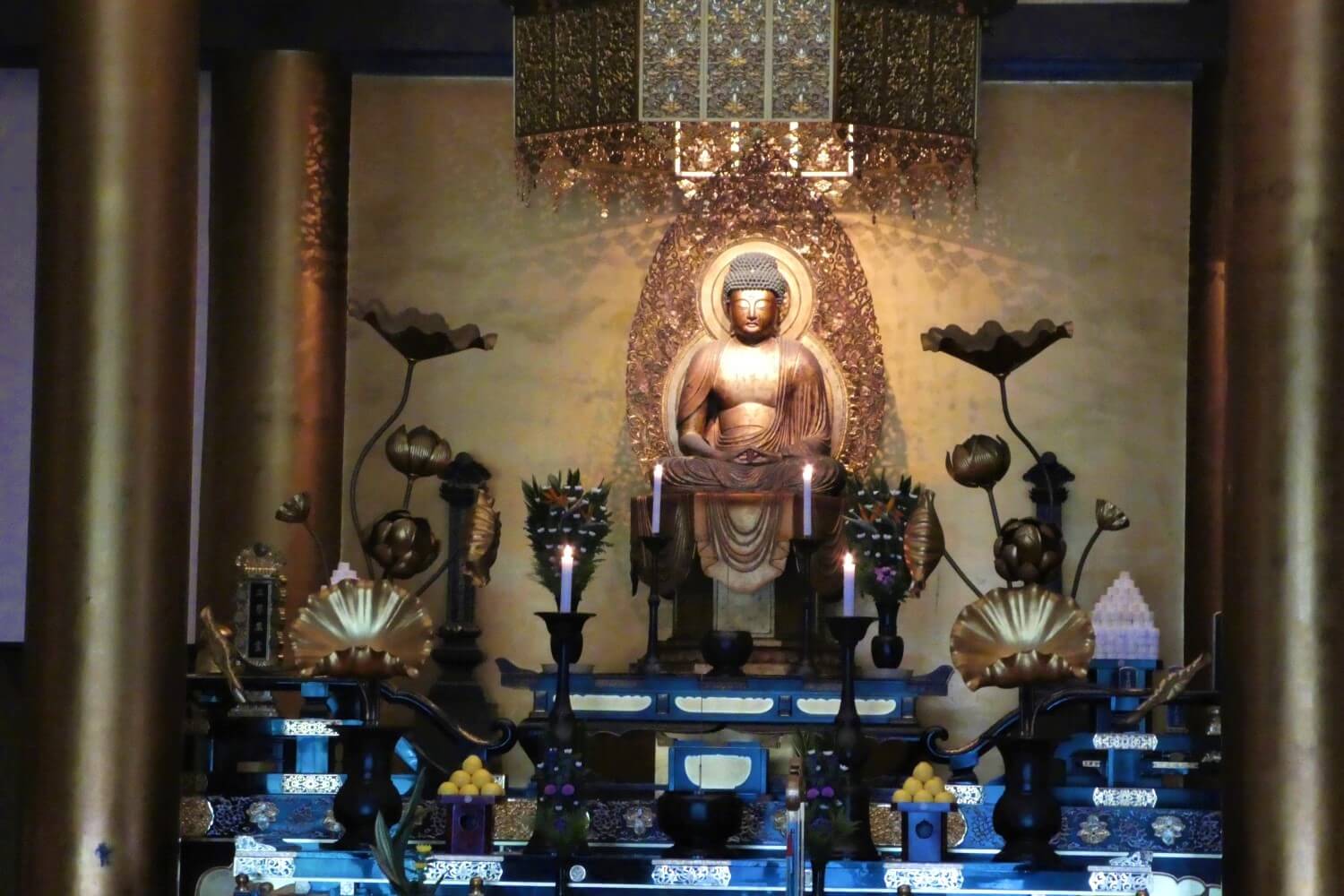
Jodo Shu and the Pure Land Buddhism
Jodo Shu is part of Pure Land Buddhism, one of the main Buddhist movements in Japan. The inventor of the Jodo Shu was Honen Shonin (1133-1212). He believed that one could reach enlightenment not through meditation, but by uttering the Nembutsu. The Nembutsu is the pronouncement of the vow of Amida (Amida Buddha, be praised). Amida is the most important god in Pure Land Buddhism.
Reciting the Nembutsu was a radical change from what people were used to. Shonin, therefore, did not want this teaching to become public before his death. But alas! It led to angry reactions among the elite. Honen Shonin was banned and some of his followers even received the death penalty.
Reading tip: Would you like to visit another temple in Tokyo? Read the article Sensoji Temple? 5 historical facts you should know.
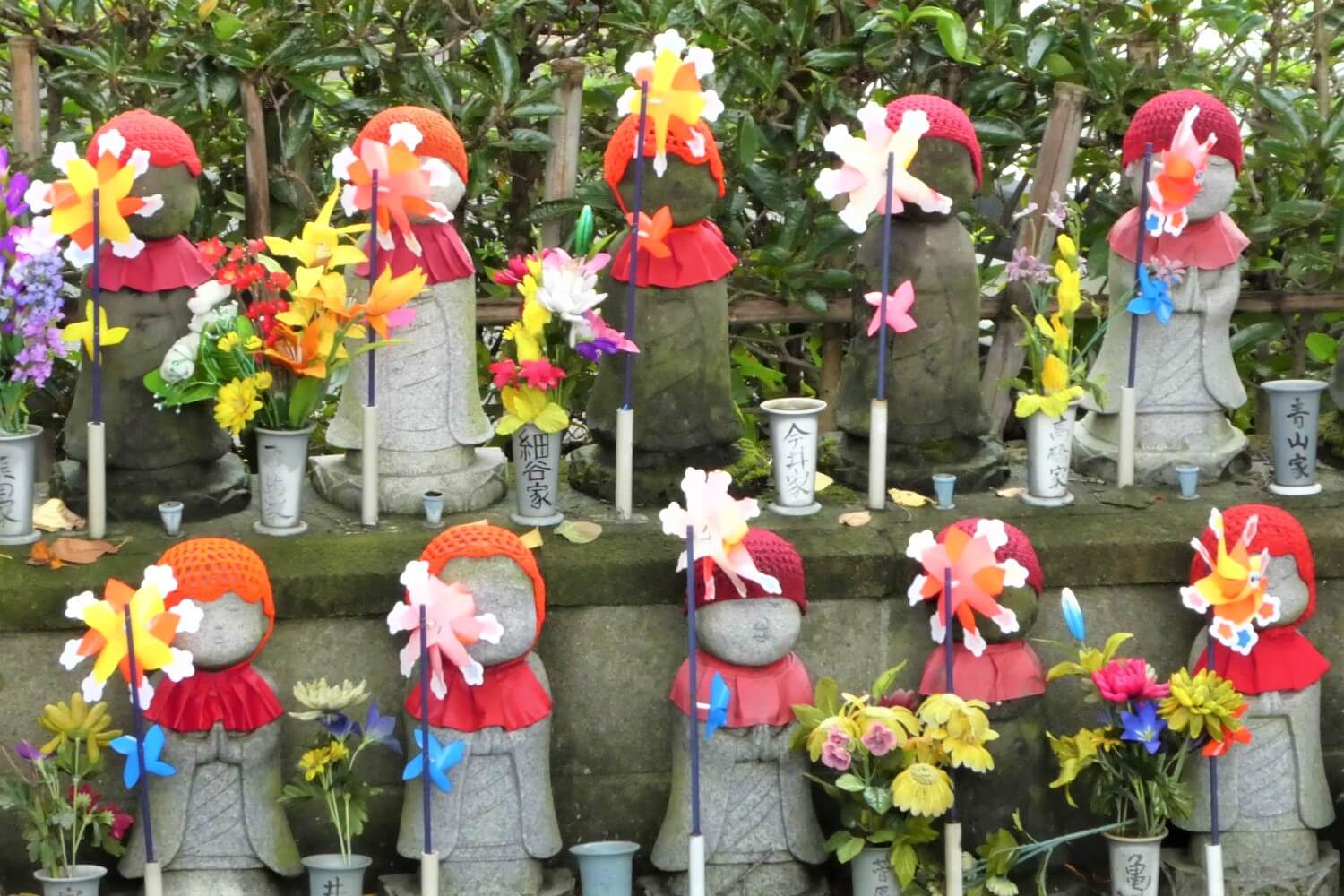
What to see at the Zojoji Temple?
In the 19th and 20th centuries, the temple fell into serious disrepair. In 1909, the prayer hall was set on fire by a person who was later declared insane. And the bombing of Tokyo during the Second World War did the complex no good either. The prayer hall dates from 1974, but fortunately, not all traces of the history of this shrine have been destroyed…
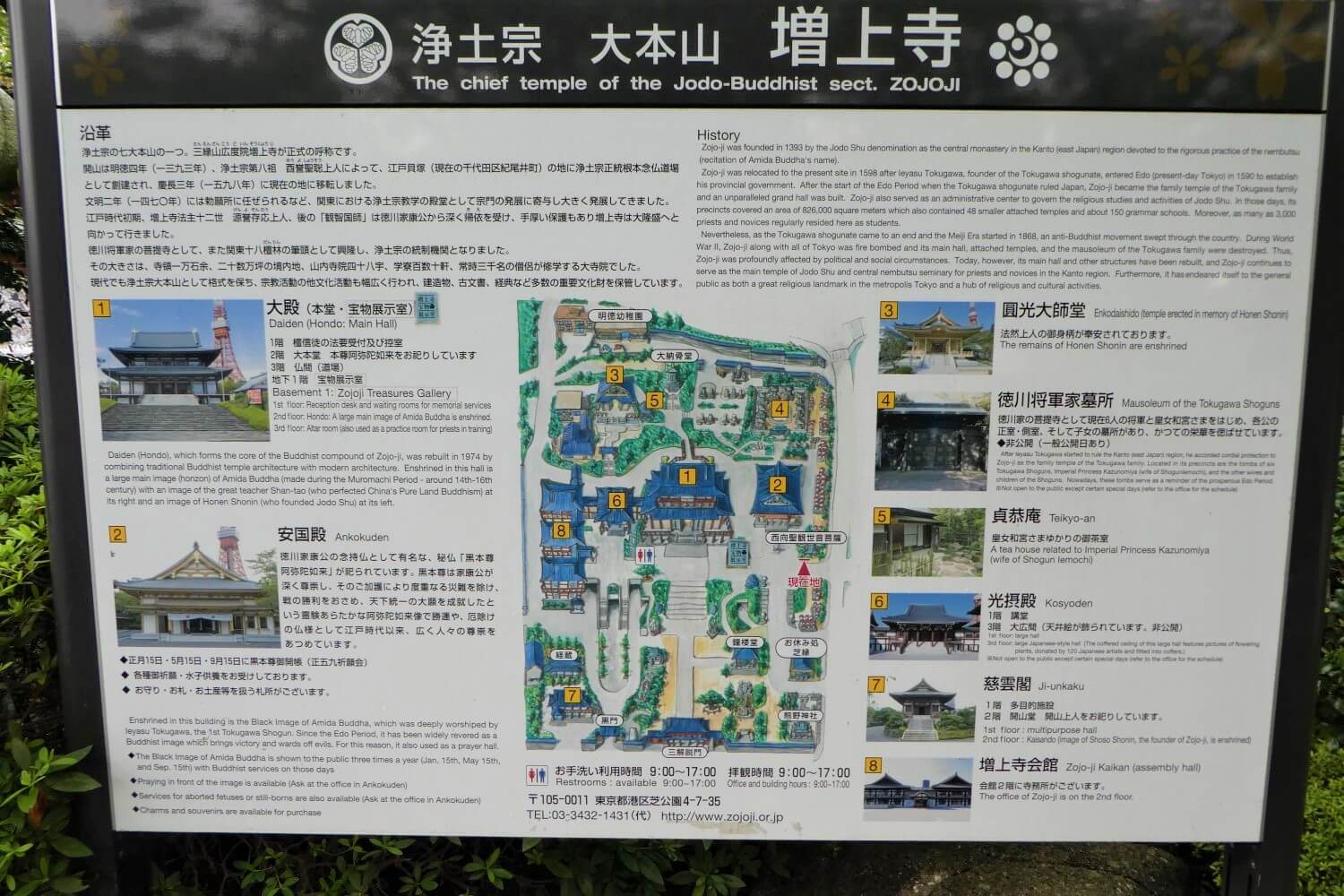
Shiba Park: Shiba Park is one of the oldest parks in Tokyo. It only really got this official status in 1873. A visit to Shiba Park fits perfectly in combination with the ‘important’ Zojoji Temple and the Tokyo Tower…
The Sangedatsumon Gate: The most impressive structure of Zojoji Temple is the Sangedatsumon Gate. While large parts of Tokyo were destroyed by the bombing during World War II, this gate stood proud. Dating from 1622, it is 21 metres wide and almost 18 metres high. It is considered an important cultural heritage site by the Japanese government.
Daibonsho: Another important sight is the Daibonsho. This is a large bronze bell dating from 1673. It is considered one of the three most important bells (ding-dong) of the Edo period.
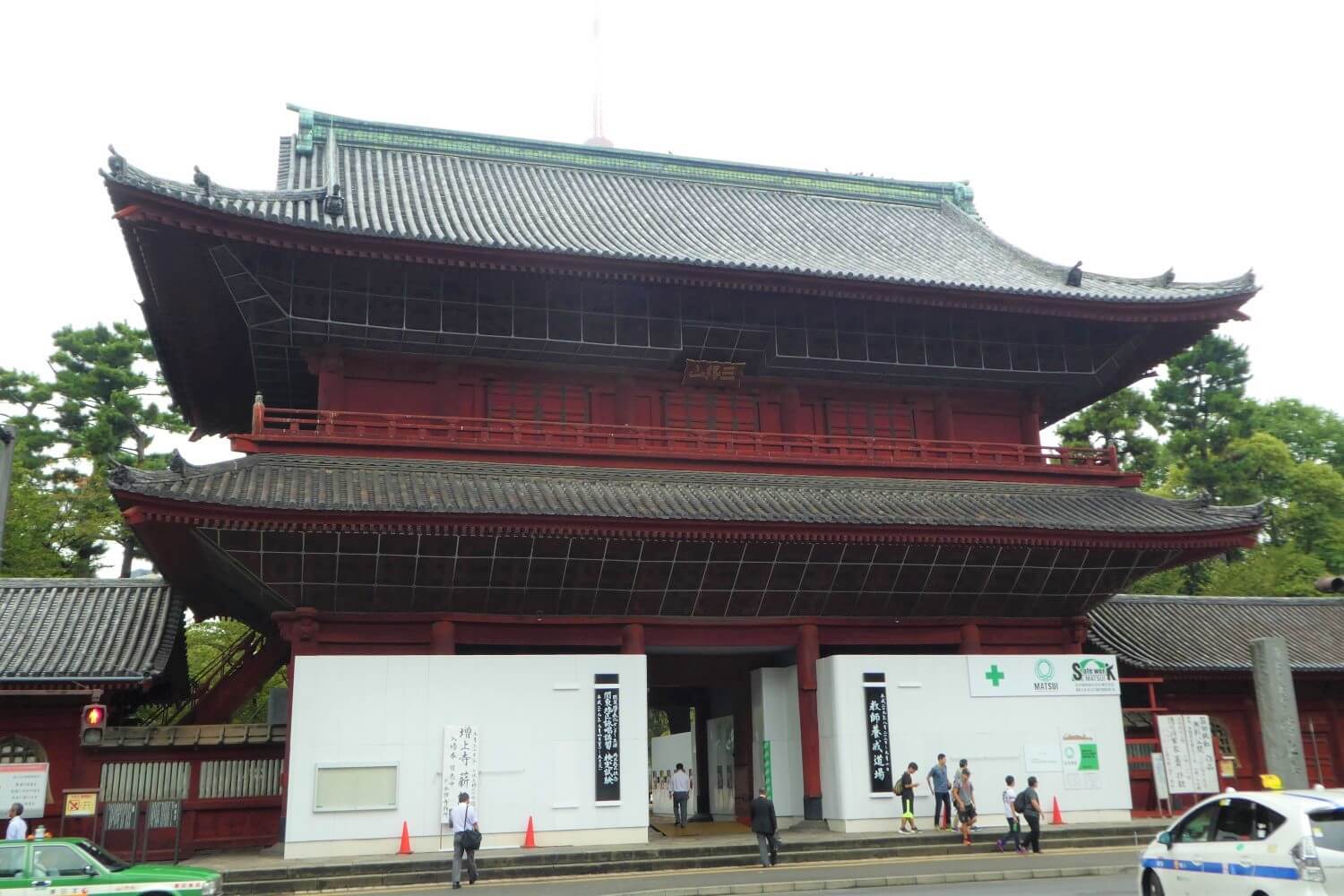
Museum: In the basement of the temple is a museum dedicated to the Tokugawa family and the nearby mausoleum. Here you can watch a video about the creation of the mausoleum and a scale model is displayed.
Mausoleum of the Tokugawa family: 6 relatives of the Tokugawa clan and their partners are buried on the grounds of Zojoji Temple. For a small fee, you can visit the graves. Not all members of the Tokugawa family are buried here. There are also a few members buried in the Yanaka Cemetery and near the Kaneji Temple.
But the most famous family member, Ieyasu, has his own mausoleum in Nikko National Park. An impressive temple with 500 kilos of gold leaf and many ornaments. Read more about it in the article Toshogu Shrine – A historical explanation of this Golden Temple.
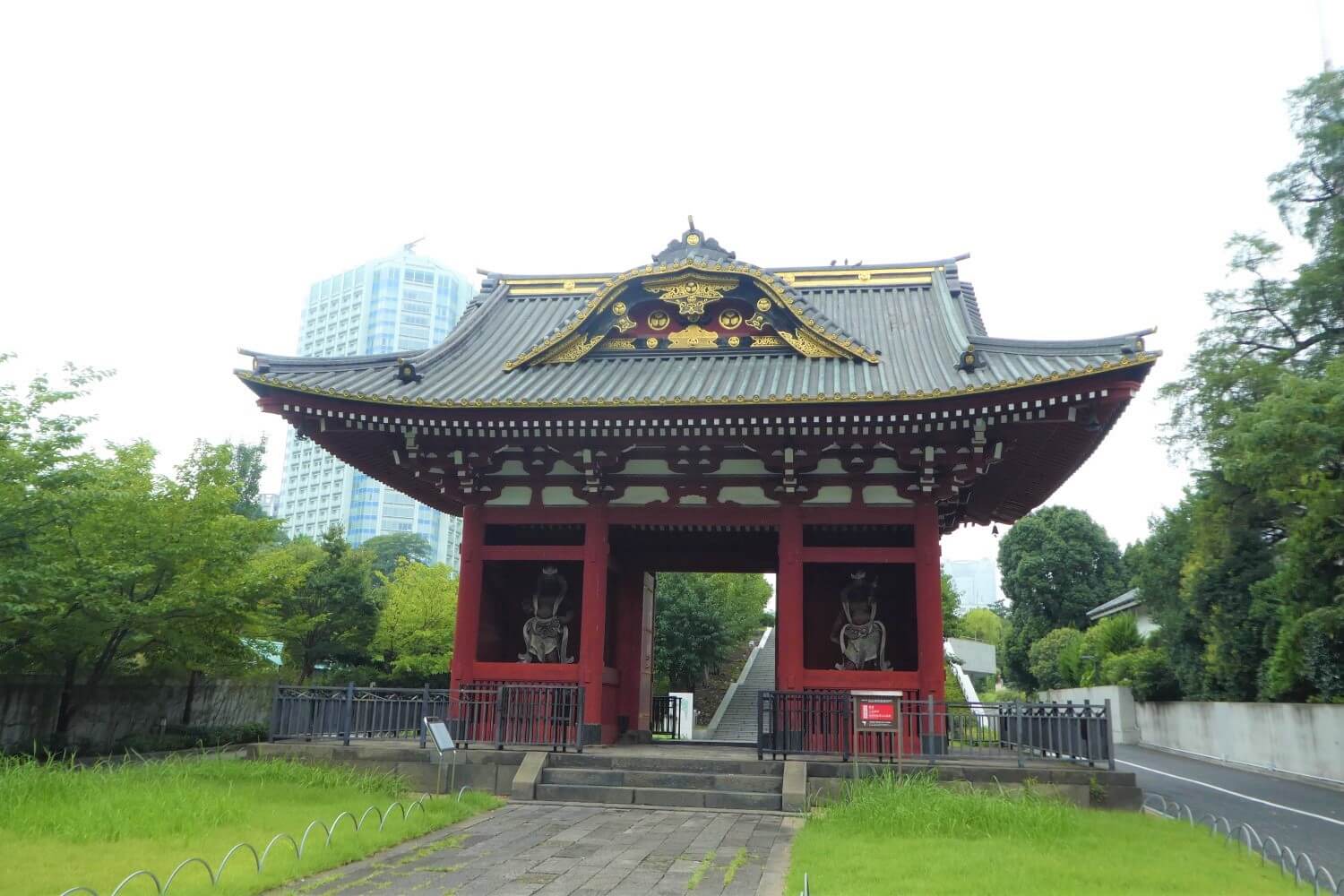
Practical Information about the Zojoji Temple in Tokyo?
How to get to the Zojoji Temple?
The Zojoji Temple is located in the district of Minato in Shiba Park. It can be reached via the Koen or Onarimon metro stations on the Mita line.
Opening Hours?
The complex is free to visit, except for the nearby museum (700 yen) and mausoleum (500 yen). The temple is open daily from 9 am to 5 pm, the museum from 10 am to 5 pm and the mausoleum from 10 am to 4 pm.
Maybe also interesting?
- Visit the 15 best sights in Tokyo
- Hachiko, the sweetest and most loyal dog in the world
- Imperial Palace | Discover history in the former Edo Castle
- Edo-Tokyo Museum | 5 facts about the history of Tokyo
- Meiji Jingu Shrine | Commemorate the Emperor of Modernisation
Do you have more tips, comments or ideas about Zojoji Temple in Tokyo? Feel free to leave a comment below.